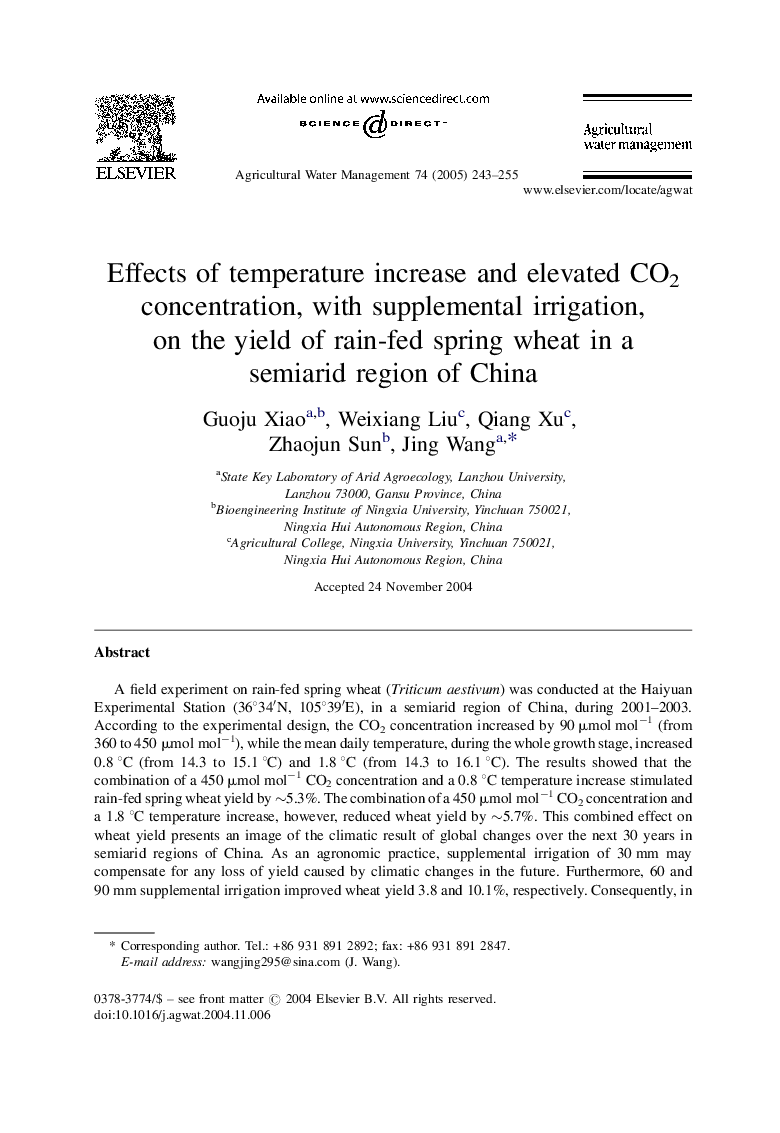| Article ID | Journal | Published Year | Pages | File Type |
|---|---|---|---|---|
| 9467331 | Agricultural Water Management | 2005 | 13 Pages |
Abstract
A field experiment on rain-fed spring wheat (Triticum aestivum) was conducted at the Haiyuan Experimental Station (36°34â²N, 105°39â²E), in a semiarid region of China, during 2001-2003. According to the experimental design, the CO2 concentration increased by 90 μmol molâ1 (from 360 to 450 μmol molâ1), while the mean daily temperature, during the whole growth stage, increased 0.8 °C (from 14.3 to 15.1 °C) and 1.8 °C (from 14.3 to 16.1 °C). The results showed that the combination of a 450 μmol molâ1 CO2 concentration and a 0.8 °C temperature increase stimulated rain-fed spring wheat yield by â¼5.3%. The combination of a 450 μmol molâ1 CO2 concentration and a 1.8 °C temperature increase, however, reduced wheat yield by â¼5.7%. This combined effect on wheat yield presents an image of the climatic result of global changes over the next 30 years in semiarid regions of China. As an agronomic practice, supplemental irrigation of 30 mm may compensate for any loss of yield caused by climatic changes in the future. Furthermore, 60 and 90 mm supplemental irrigation improved wheat yield 3.8 and 10.1%, respectively. Consequently, in this region, supplemental irrigation (from 30 to 90 mm) may play a crucial role in maintaining rain-fed spring wheat yield affected by global climatic changes.
Related Topics
Life Sciences
Agricultural and Biological Sciences
Agronomy and Crop Science
Authors
Guoju Xiao, Weixiang Liu, Qiang Xu, Zhaojun Sun, Jing Wang,
